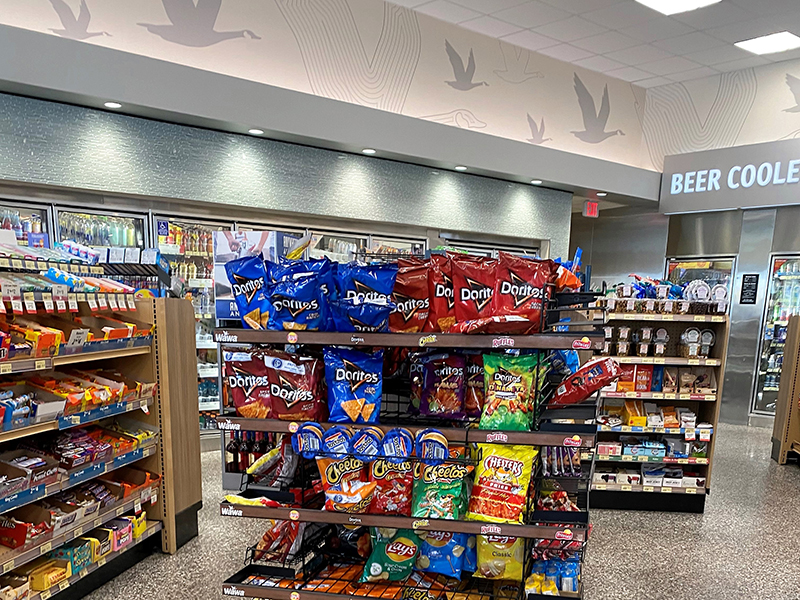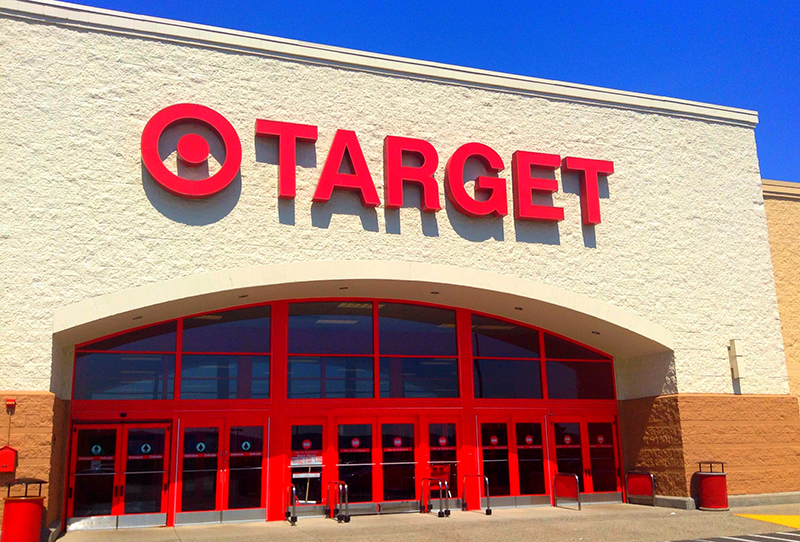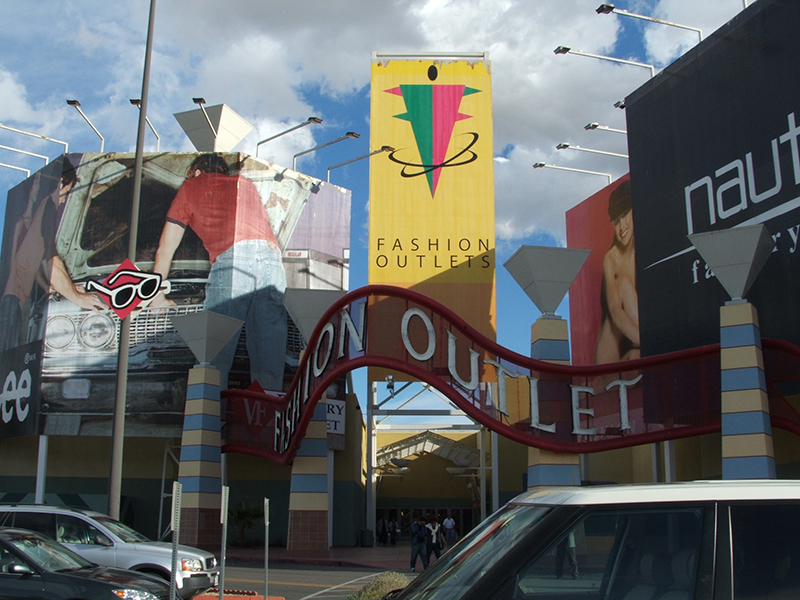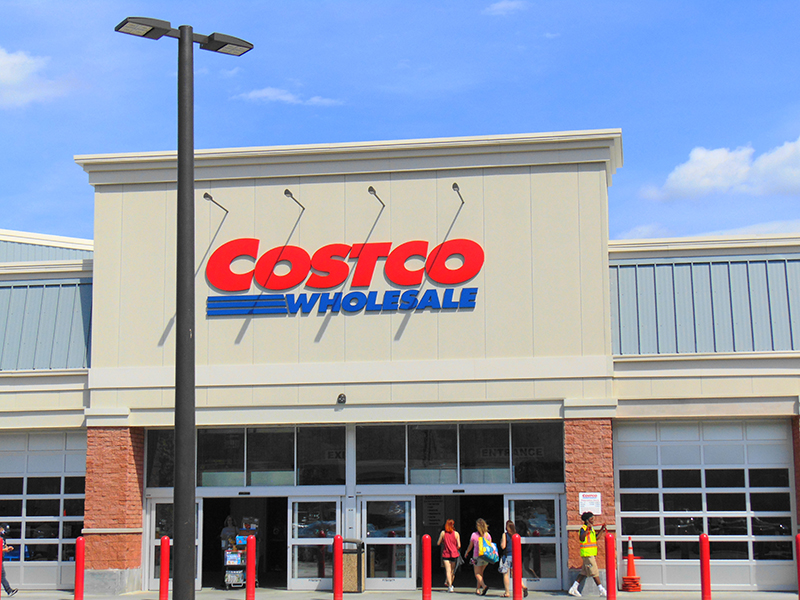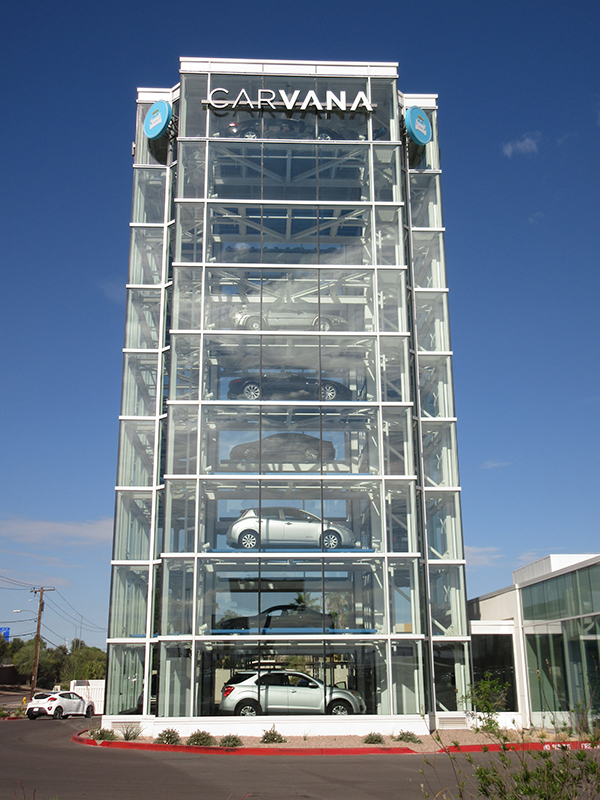Major Types of Retailers
Learning Objectives
By the end of this section, you will be able to:
- Characterize various store retailers.
- Characterize various non-store retailers.
Retailers, in some form or another, have been around for most of human history. As early as 800 BCE in ancient Athens, Greece, businesspeople sold their goods in developed markets at the city’s center.8 Throughout history, this type of business has grown and become more specialized based on the needs of customers and the ability we now have to travel fairly easily. Today, retailers are often defined by their product lines—a group of products that are related to one another. Retailers are broken into two main categories, store or non-store retailers, which are further broken into retail types. Retail types are defined by their product lines. See Table 18.1 for a breakdown of retail types, the typical product focus for that retail type, and examples of retailers that fall into that type.
|
Retail Type |
Product Focus |
Example |
|
Store Retailers |
|
|
|
Specialty Store |
Single product line |
AutoZone |
|
Department store |
Wide variety of product lines |
JCPenney, Kohl’s |
|
Supermarket |
Multiple product lines; focused mostly on grocery with limited services |
Publix, Kroger, Save A Lot |
|
Superstore |
Combination of supermarket and department store |
Target, Walmart |
|
Convenience Store |
Limited range of everyday items |
7-Eleven, Speedway |
|
Category killer |
Very large superstores with wide product lines within a category |
Best Buy, Lowe’s, Home Depot, Staples, Office Depot |
|
Discount store |
Broad range of products with few or no services |
Dollar General, Dollar Tree, Family Dollar |
|
Off-price retailer |
Brand name overstock, irregulars, and closeouts |
T.J.Maxx, Ross |
|
Factory outlet |
Overstock or over-manufactured brand-name items, usually clothing; typically in a mall setting with other factory outlets |
Sawgrass Mills Factory Outlet, Indiana Premium Outlets, Osage Outlets; Hanes Outlet, L.L.Bean Outlet |
|
Warehouse club |
Bulk items at discount for paid membership |
Sam’s Club, BJ’s, Costco |
|
Non-store retailers |
|
Vending machines, direct-mail catalogs, television home shopping online, telemarketing, direct selling |
|
Automatic vending |
Unmanned with very limited product line located in places store retailers are not |
Snack and beverage machines in a hospital waiting room |
|
Direct mail and catalogs |
Limited product lines advertised through the mail |
Tiffany & Co.’s Blue Book, L.L.Bean, Fingerhut |
|
Television home shopping |
Limited product lines advertised on television |
Home Shopping Network, QVC |
|
Online retailing |
Can be wide or limited product lines of products offered for sale via the Internet |
Amazon |
|
Telemarketing |
Very limited product line sold via the telephone |
|
|
Direct selling |
Very limited product line sold by salespeople who are very knowledgeable about the product and sell directly to a business or end user; used in B2C, but more often in B2B |
Kirby Vacuums (B2C) Publishing companies (B2B) Technology companies (B2B) |
Table 18.1 Types of Retailers
Store Retailers
Retailers tend to be the easiest of the channel members to identify because we see them everywhere we go, both in person and online. A store retailer is a traditional brick-and-mortar establishment where products are displayed for customers to purchase. Store retailers can be categorized in many ways based on their strategy mix, which includes a combination of store hours, location, product assortment, and prices.9
As the number of store retailers has decreased significantly over the years due to their higher operating costs, some companies have found more innovative ways to provide their products in a similar setting. For example, Amazon Go is a store retailer that allows customers to shop in-store, but has eliminated the use of cashiers (and long lines). As customers choose the products they want, the automated store keeps track of the purchase and charges the customers when they exit the store.10
Specialty Stores
Specialty stores focus on selling a single type of product or a single product line. The employees of specialty stores are often very knowledgeable about the products they sell and offer high levels of customer service. For example, when you need a new battery in your car, you may head straight to AutoZone, a retailer specializing in vehicle parts. When you arrive, an associate will be able to assist you in choosing the correct battery for the make and model of your car, and sometimes, they may be able to install it for you.
Department Stores
Department stores are typically larger than specialty stores and have separate areas or departments for similar product lines. For example, areas could include shoes, kids’ clothing, housewares, and so on. Each compartmentalized area may mimic the look and feel of a specialty store to make for a more intimate experience, but often the sales associates are not highly trained in each area. For example, Kohl’s, a department store chain in the United States, has separate departments containing women’s fashion, shoes, kitchenware, and toys.
Supermarkets
A supermarket is defined as a store that mostly focuses on a product mix of grocery items but also carries household and personal items and offers limited services. One example is Publix, an employee-owned supermarket chain that opened in 1930 and has nearly 1,000 stores in the southeastern United States.11 Publix’s average retail size is roughly 32,000 square feet, and more than 50 percent of its shelves are dedicated to grocery items. The other 50 percent consists of cleaning items, toiletries, over-the-counter medicines, beer/liquor, and personal hygiene products. Like most supermarkets, Publix also offers a deli, a bakery, hot food bars, a pharmacy, some apparel, and sometimes even pool supplies, toys, and other nonfood items.
Convenience Stores
Named for their convenient location, a convenience store is a small retail business that stocks a limited range of everyday items, such as groceries, snacks, soft drinks, tobacco, toiletries, and lottery tickets (see Figure 18.4). In the United States, convenience stores are most often linked to gas stations. Convenience stores offer consumers the convenience of stopping to fill up their tank and running inside for a few essential items without having to drive to a supermarket or other retailer. The first convenience store in the United States opened in Texas in 1927 and later became known as 7-Eleven. In 2020, there were approximately 150,000 convenience stores in the United States.12
Figure 18.4 A convenience store is a type of retail store that is conveniently located and carries limited items. (credit: “Wawa Miami” by Phillip Pessar/flickr, CC BY 2.0)
Superstores
Superstores are very large retailers that have characteristics of both supermarkets and department stores (see Figure 18.5). Like supermarkets, they sell a wide range of grocery items. But they also have considerable space dedicated to nonfood departments, as do department stores. Target operates 1,927 retail stores in the United States. Some of its stores are considered superstores, where consumers can purchase not only (nearly) everything on their grocery list, but also clothing, household goods, electronics, toys, and sporting equipment.
Figure 18.5 Target is a type of superstore that sells a wide variety of personal and grocery items. (credit: “Target” by Mike Mozart, JeepersMedia/flickr, CC BY 2.0)
Category Killers
Category killers are large superstores or big-box retailers that are bigger, cheaper, and more convenient than other types of stores. Because of their sheer size, they have the advantage of buying products in very large quantities, which gives them a strong negotiation position for the price they pay to distributors. In turn, they can then offer discounted prices to consumers. These stores are called category killers because they often put nearby specialty stores out of business. Home Depot and Lowe’s are considered category killers because of their exhaustive inventory selection and low prices. The popularity of this big-box format means that smaller hardware stores may find it difficult to compete.
Discount Stores
During the 2008 recession, many retailers began closing their doors. But Dollar General was one retailer that saw exponential growth during this time.13 Dollar General and competitor Dollar Tree are discount stores—stores that sell a broad range of products at lower prices than competitors. While discount stores offer lower prices and often less variety than competitors, they often also offer fewer services and little customer service. As inflation put pressure on household budgets in 2022, shoppers from a range of income levels turned to dollar stores to save money on everyday necessities.
Link to Learning
Dollar Stores and the Community
Learn more about the impact dollar stores have on the community and commerce. It’s not always positive. Experts speak in this video about the potential negative impact and issues.
Off-Price Retailers
Retailers that provide high-quality, name-brand goods at deeply discounted prices are considered off-price retailers. These retailers often purchase brand names that are irregular, closeouts, overstock, and off-season. While these retailers offer goods within more than one product line, often consumers cannot be guaranteed to find the same brand or item(s) in a store twice. T.J.Maxx, one of the largest clothing retailers in the country, utilizes this strategy. The company’s buyers purchase over-ordered or over-manufactured products from distributors at deeply discounted prices. This merchandise is then offered to the consumer at lower prices than can be found in department stores.
Factory Outlets
In some ways, factory outlets are similar to off-price retailers (see Figure 18.6). The goods found in factory outlets are typically over-manufactured and sold at lower prices. However, factory outlet goods are sold directly from the manufacturer rather than through a third party. Many clothing manufacturers have factory outlets, which are typically clustered together in a factory outlet mall, a space where numerous factory outlets are located. For example, you may see Coach, Gap, or Lands’ End stores in outlet malls. Sawgrass Mills Factory Outlet, located in Sunrise, Florida, is the largest factory outlet mall in the United States. It houses over 350 factory outlet stores, including Adidas, LEGO, and Zales.14
Figure 18.6 Factory outlet stores offer lower-priced items sold directly from the manufacturer. (credit: “DSCF1532.JPG” by jkonrath/flickr, CC BY 2.0)
Warehouse Clubs
Warehouse clubs (see Figure 18.7) are a type of retailer that sells goods in bulk at discounted prices to members only. Shoppers must first become members of the warehouse club before they are allowed to purchase. Costco and Sam’s Club are two of the largest warehouse clubs in the United States, and both offer a limited variety of perishable and nonperishable goods. Warehouse clubs operate out of enormous, no-frills, low-cost facilities that resemble warehouses.
Figure 18.7 Costco is a warehouse club that offers bulk items at a discount; consumers can only enter if they are paid members. (credit: “Costco (East Lyme, Connecticut)” by jjbers/flickr, CC BY 2.0)
Non-store Retailers
Non-store retailers are those retailers that operate outside of the traditional brick-and-mortar location. There are six main types of non-store retailers, and we will examine each in the following sections.
Automatic Vending
Also referred to as vending machines, automatic vending is the use of an electronic device that dispenses a product (see Figure 18.8). There is no direct human contact in the transaction. Traditionally, automatic vending machines would dispense items such as potato chips, candy, and soft drinks. However, more recently, companies have found automatic vending to be successful with other items, from cell phones to hot meals to automobiles. Carvana is an automatic vending non-store retailer. Using Carvana, consumers can purchase their cars online, complete with financing, and pick up their vehicles at one of its vending machines or have it delivered with little or no human interaction needed. Debuting its 27th car vending machine in Atlanta, Georgia, in 2020 Carvana now has a location that is 12 stories high and holds 43 vehicles.15 The company unveiled its first car vending machine in 2012, taking automobile shopping—and automatic vending—to a whole new level!
Figure 18.8 Carvana features automobile vending machines that allow consumers to purchase cars online and have them delivered. (credit: “Carvana Delorean Back to the Future Time Machine” by zombieite/flickr, CC BY 2.0)
Direct Mail and Catalogs
Direct mail involves solicited or unsolicited advertising of products and services to prospective customers through the mail (Figure 18.9). Direct mail and catalogs are likely the oldest form of non-store retailing. The first mail-order catalog in the United States was Tiffany & Co.’s Blue Book in 1845.16 The company still uses catalogs in addition to store retail locations, and the catalogs feature some of the rarest diamonds and jewels in the world. A more popular mail-order catalog that began in the 1800s was the Sears Roebuck and Co. catalog, the “big book,” which came to feature hundreds of pages of products offered by the company; the last was published in 1993. With the rise of the Internet, catalogs and direct mail are not as prevalent in marketing today, but it is still a retailing strategy that works for many companies.
Figure 18.9 Direct mail offers products to consumers via advertisements sent through the mail. (credit: “Catalog” by Nicolás Boullosa/flickr, CC BY 2.0)
Television Home Shopping
Another example of a non-store retailer is television home shopping. Television home shopping primarily targets women over the age of 40 and is a business practice in which products or services are sold via television. There are some cable network stations that are dedicated solely to home shopping 24 hours a day, 7 days a week. One example is QVC, which stands for Quality, Value, and Convenience. The company was founded in 1986 and purchased its rival Home Shopping Network (HSN) in 2017. It generated $14.1 billion in profits in 2018.17 The 2015 Hollywood movie Joy, starring Jennifer Lawrence, showcases real-life entrepreneur Joy Mangano and the power of QVC as a non-store retailer.
Similar to online shopping, consumers can order products directly from a company via telephone or the Internet. Unlike the Internet and direct-mail catalogs, however, viewers can see the product being demonstrated or modeled in real time. While QVC hosts are demonstrating products, control room employees are able to monitor sales in real time as they are placed.
Online Retailing
Online retailing allows consumers to search and purchase products remotely over the Internet. Although the Internet’s public birthday is debatable, online retailing started shortly thereafter. Though Amazon (started by Jeff Bezos in 1995 as a book retailer) was not the first online retailer, its inception prompted thousands of companies to follow suit. In 2021, US consumers spent $5.4 trillion at online retail stores, a figure that is expected to increase. It is anticipated that, by 2023, online shopping will make up 22 percent of retail sales across the globe.18
Telemarketing
Telemarketing is the attempted sale or marketing of goods and services to potential customers via telephone. The telephone has been used as a sales tool since shortly after its invention. The 1970s, however, was the decade when technology became advanced enough that call centers—a centralized location or department that handles calls from customers—became an economical way of contacting potential customers. Over the next few decades, telemarketing became a staple in marketers’ strategies. But this resulted in consumers being annoyed with these calls and a rise in scamming calls, particularly those targeting the elderly. In 1991, the Federal Trade Commission (FTC) addressed this problem with new rules for telemarketers, but it was not until 2003 that the Do Not Call Registry was created.19 Even with these changes, legitimate and non-legitimate telemarketing finds its way onto phones. While many (legitimate) companies still utilize this form of non-store retailing, telemarketing is generally used (and more widely accepted) in business-to-business (B2B) settings.
Direct Selling
Direct selling is selling products and services directly to the consumer in a non-retail setting. Direct selling typically consists of a salesperson attempting to sell a product or service to a potential customer at their residence or place of employment. This practice was very popular in the 1950 and 1960s when women were often stay-at-home mothers and/or homemakers. Salespeople would bring the product—a vacuum, for example—to the consumer’s home and demonstrate its benefits in an attempt to make a sale. With the rise of two-income families and the Internet, direct selling is not used frequently today in the consumer market. It is, however, still a widely used practice in B2B. However, it remains effective for some companies, such as Kirby, which still sends salespeople door-to-door to sell its vacuums.

